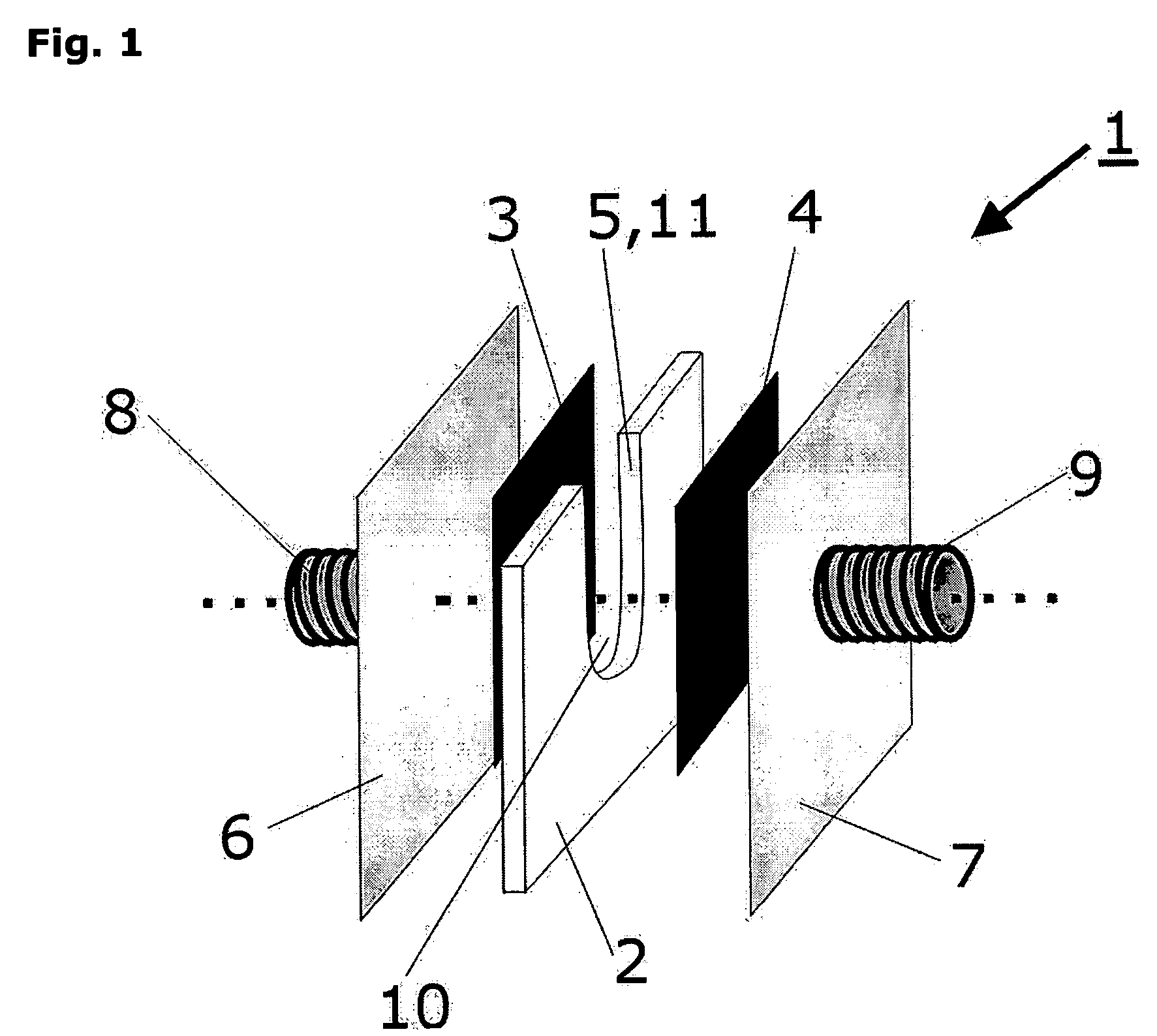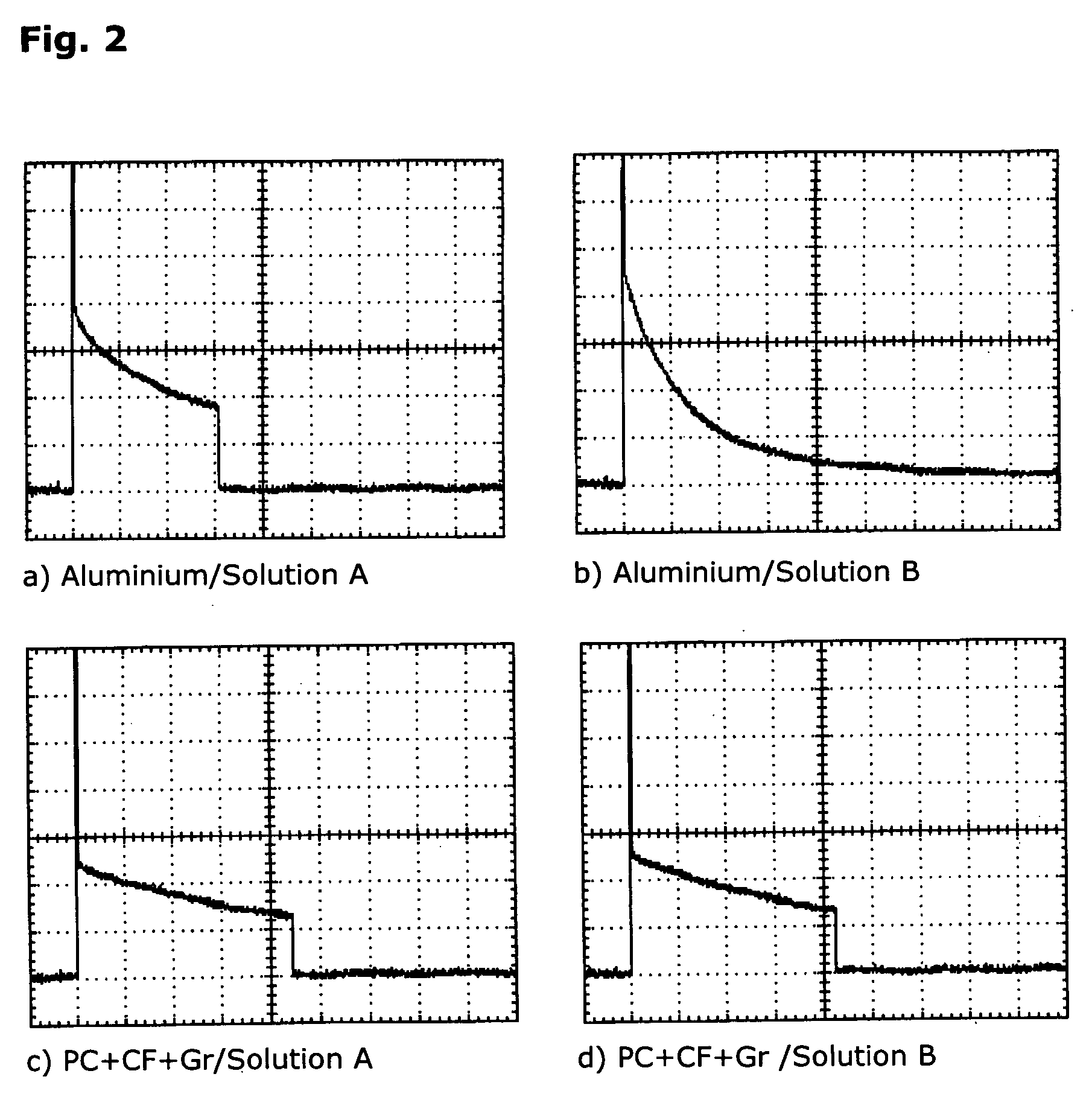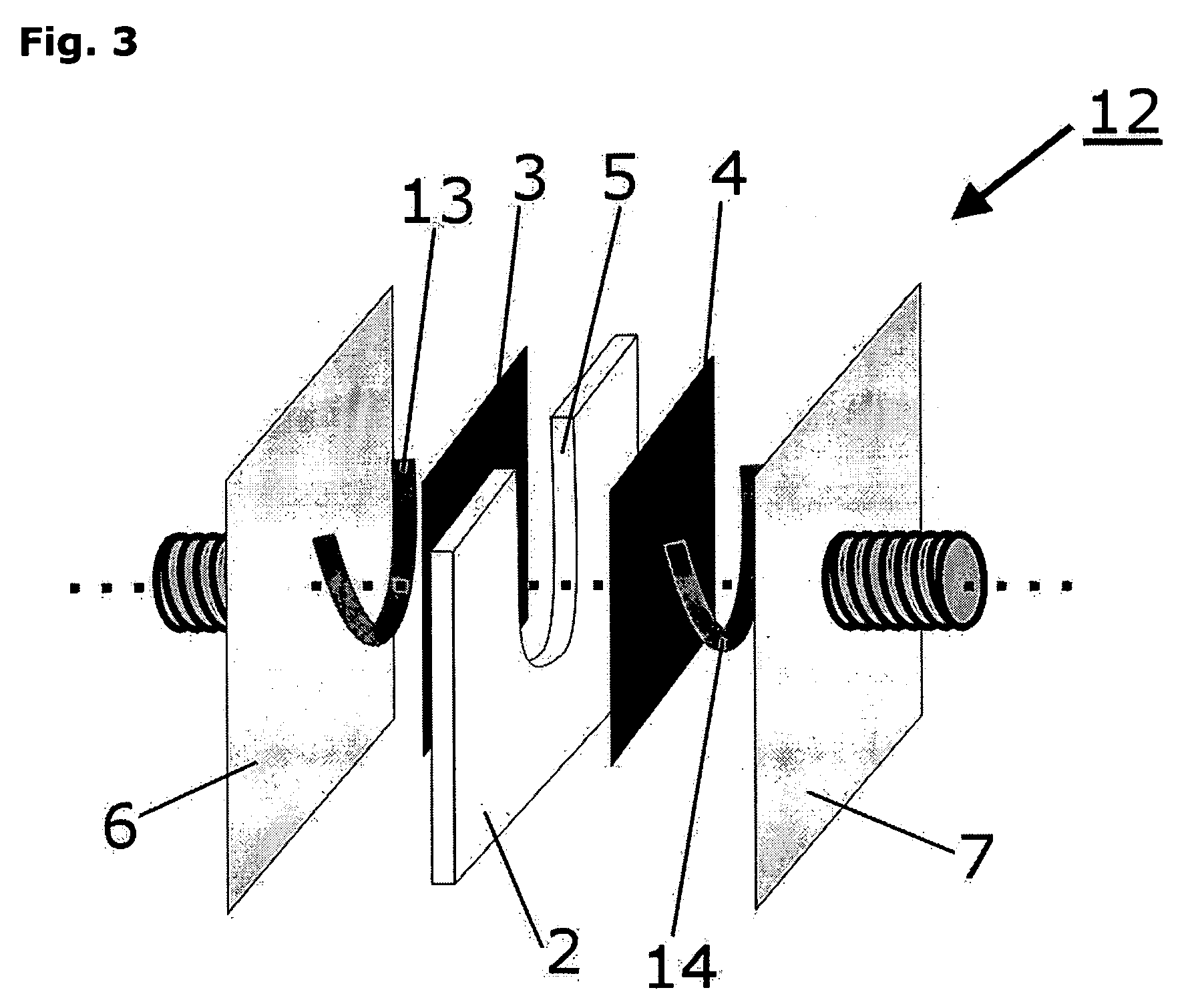[0008] According to the invention the object is solved in that at least one electrode is made of a conductive synthetic material at least based on a plastic material which is doped with at least one conductive substance. To avoid the release of metal ions a conductive synthetic material being made of doped plastic is used. Thus, toxic effects, for instance on living cells, such as during the release of Al3+ ions can be avoided. Medical compatibility of the generating products can also be enhanced this way so that, for example, the possible use of transfected primary cells for
ex vivo gene therapy is supported. As a result of
doping the plastics with conductive substances, a current flow between both electrodes could be achieved during discharge, which is equal to the current flow using commonly used cuvettes having
metal electrodes. Surprisingly, it has been determined that using the used doped plastic material with electroporation better results in respect of the transfection efficiencies can be achieved if compared to the use of, for instance, cuvettes having electrodes made of
aluminium. By avoiding the toxic effects caused by the release of metal ions the ratio of transfection efficiency to
cell mortality is significantly increased. It is a further
advantage of the container according to the invention that no precipitate is created in the solution during
electric discharge, which could adhere to the cells and impair further analysis and use of transfacted cells, respectively. Obviously, it is yet a further
advantage of the container according to the invention that the
buffer solution has less effect on the doped plastic electrodes used. It was actually determined that in the cause of discharge very
high resistance is generated at the surface of the electrode, which, at a given start current, causes a drastical decrease of current flow, if buffers containing
phosphate but no
chloride are used with cuvettes made of aluminium. Surprisingly, this can be avoided by using the container and electrodes according to the invention, respectively. The containers according to the invention are thus merely affected by the
conductivity of the solution but not negatively affected by the buffers used. The containers according to the invention can be injection-moulded in one mould using two-component
injection moulding because doped synthetic material, in contrast to intrinsically conductive plastic, is injection-mouldable. Thus, the container according to the invention can be produced in an easy and cost effective manner. The doped plastic material may have a density, for example, between 1.3 and 1.5 g / cm3, preferably a density of 1.37 or 1.54 g / cm3, and a
melting temperature of 230 to 310° C. Preferably, the doped plastic material has a specific forward resistance of 2
Ohm×cm or less, and a specific
input resistance of 104
Ohm or less.
[0013] In another advantageous embodiment of the invention it is provided that the outer limit is made of synthetic material, preferably transparent plastic material, because it is thus possible to produce the entire container using
injection moulding methods. It may be advantageous in this respect if the outer limit is made of the same plastic material as the plastic material on which the at least one electrode is based. In this embodiment there may be benefits with the
processing of the synthetic material using two-component
injection moulding. Thereby, on the one hand the production is simplified and on the other hand the production costs are reduced. However, for special applications, the outer limit may consist of other material as well.
[0019] It is a particular
advantage of the invention that the containers or container arrangements according to the invention can be produced using a method, wherein the container or the container arrangement is produced by two-component injection moulding, wherein at first the outer limit is injection-moulded leaving one recessed window and the conductive synthetic material being made of doped plastic is subsequently injection-moulded into this at least one window, or wherein at first the at least one electrode is injection-moulded of the doped plastic material and the outer limit is subsequently injection-moulded around the at least one electrode. Contrary to the production of containers or cuvettes with electrodes consisting of metal, with which the electrodes have to be manually or automatically placed into the moulded frame or mould before or after moulding of the container, the invention provides a very easy and cost-
effective method of production. The containers or container arrangements according to the invention can be injection-moulded in one mould in a two-
step method so that the costs of their production are significantly lower as the usual costs for the production of electroporation or elektrofusion cuvettes.
 Login to View More
Login to View More 


